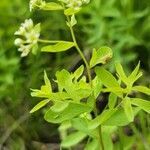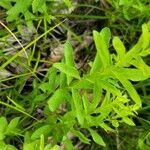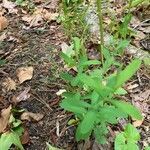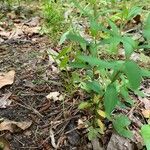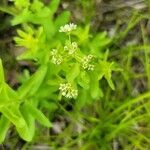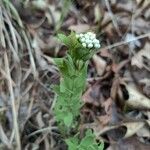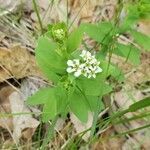A small erect herb. It grows 10-40 cm tall. It loses its leaves during the year. The leaves are alternate, sword shaped and thick. Theya re 2-5 cm long by 5-10 mm wide. The fruit is urn shaped and fleshy.
Leaf blades light green to grayish or bluish green, lanceolate, elliptic, or ovate, 0.7–5.3 cm, apex obtuse, acute, or acuminate. Flowers: hypanthium base not dilated.
